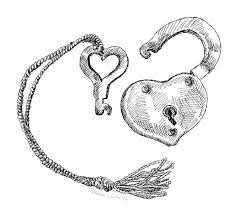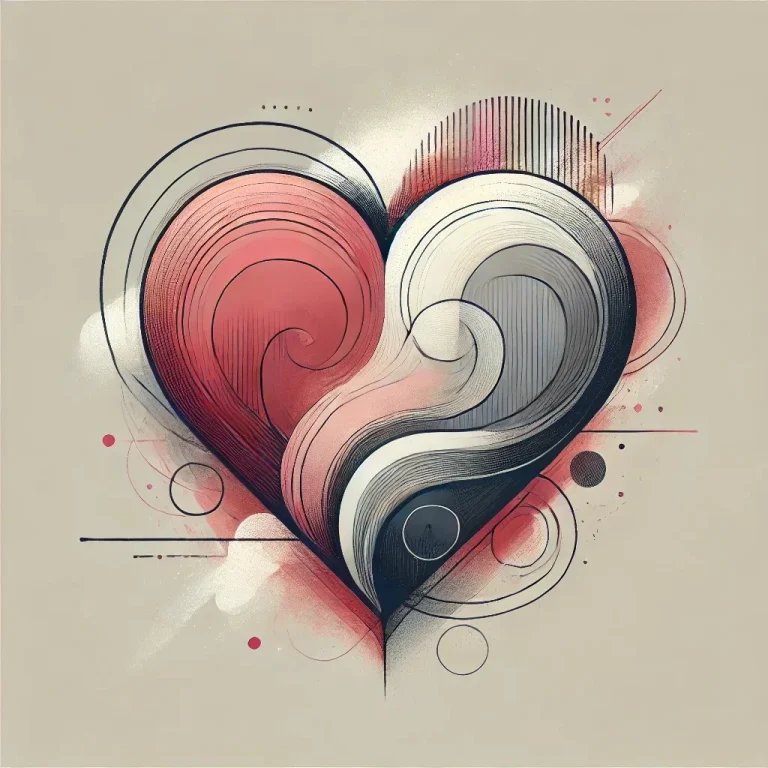If you’ve ever been captivated by the beauty of creating heart shapes in art, then Drawing:16tykyk-J8c= Heart will guide you through a creative process that transforms this simple symbol into something remarkable. Whether you’re an amateur doodling a basic heart or an experienced artist crafting a detailed anatomical heart, this guide breaks down everything step by step. From traditional hand-drawn hearts to cutting-edge digital art, we’ll explore techniques, tools, and the significance behind the timeless symbol of the heart. Ready to dive into this creative journey?

What is Drawing:16tykyk-J8c= Heart?
Drawing:16tykyk-J8c= Heart refers to a process of illustrating hearts in various styles, incorporating both traditional and digital art methods. It starts with the basics—simple heart shapes that most people can recognize at a glance. But as you delve deeper, this practice expands into more intricate forms, including anatomical heart drawings and even digital 3D models. With the rise of artificial intelligence in art, this process also allows artists to experiment with new technologies, blending creativity with modern tools to produce unique and mesmerizing heart illustrations.
The Significance of the Heart in Art
The heart has always held deep emotional and symbolic meaning across cultures. In art, it’s not just a symbol of love and affection but also of life, vulnerability, and the human experience. Throughout history, from the anatomy vintage illustrations of the human heart to the stylized heart shapes used in modern digital creations, the heart has remained a timeless symbol. Artists use it to convey a wide range of emotions, and its simplicity or complexity can express everything from pure love to heartbreak, as seen in the imagery of the broken heart.
Basic Heart Shape: The Foundation
The simplest way to start drawing a heart is by creating a basic heart shape using simple geometric forms. Begin with a straight vertical line to act as a guide for symmetry. Then, draw two equal curved lines at the top, which form the lobes of the heart. The bottom point is connected smoothly, creating that universally recognized heart shape. This basic shape is the foundation for more complex forms, and mastering it is crucial before adding intricate details like shadows or veins.
Step-by-Step Guide to Drawing:16tykyk-J8c= Heart
1. Start with a Vertical Line
Draw a light vertical line in the center of your paper or screen. This line serves as the backbone, helping ensure your heart remains symmetrical on both sides.
2. Add Two Curved Lines
From the top of the vertical line, add two rounded curves. These curves should be even and meet at the top, forming the classic double-lobed structure of a heart.
3. Connect the Bottom Point
Bring the two curves down and taper them into a soft, pointed bottom. This is the critical part of forming the bottom curve that gives the heart its recognizable shape.
4. Add Intricate Details
Once the basic shape is complete, enhance it by adding subtle shading, textured lines, or even details like veins to make your heart look more realistic or artistic.
Common Mistakes When Drawing:16tykyk-J8c= Heart
Even though the heart shape is simple, many beginners make common mistakes. One frequent error is making the top lobes uneven, which causes the heart to look lopsided. Another mistake is drawing the bottom point too sharply or incorrectly, resulting in an awkward heart shape. Over-curving the lines or misaligning them can also throw off the balance. The solution? Use a light vertical line as a guide and practice controlling the symmetry of your curved lines and angles. Remember, drawing a heart is about balance and flow.
Incorporating Intricate Details
Once you’ve mastered the basic heart, you can elevate your drawing by incorporating intricate details that add depth and realism. For instance, in anatomical drawings of the heart, features like the aortic arch, superior vena cava, and coronary arteries bring complexity to the form. Even in a stylized heart, adding texture, shading, or small highlights can create the illusion of dimension and realism. Pay close attention to light sources and how they affect the surface of the heart, especially in digital art or when adding a 3D effect.
You may also like to read: FamousParenting MomLife
Human Heart vs. Artistic Heart
The difference between drawing a simple, stylized heart and an actual anatomical heart is striking. The human heart, with its complex system of ventricles, veins, and arteries, represents not only a vital organ but also the complexity of life. On the other hand, the artistic heart is often a simplified, smooth shape that represents emotion rather than biology. However, many artists combine these two concepts, drawing hearts that are anatomically correct but still hold symbolic meaning, blending the scientific with the symbolic to create art that is both realistic and metaphorically rich.
Using Digital Tools for Heart Drawings
Today’s artists have the advantage of digital tools that can take heart drawings to new heights. Programs like Adobe Illustrator or Procreate allow for precise lines and easy adjustments, helping artists refine their work without starting from scratch. Artificial intelligence can even assist in generating 3D models or suggesting improvements based on common patterns. Whether you’re working on a simple heart shape or a highly detailed anatomical heart, digital tools provide endless opportunities for creativity. Plus, the use of layers, effects, and digital brushes can simulate traditional drawing techniques in an enhanced, modern way.
Creating a 3D Drawing:16tykyk-J8c= Heart
Transforming your 2D heart drawing into a 3D heart can bring it to life. The key to achieving this is mastering shadows and light sources, which give the heart depth and a sense of realism. By carefully placing highlights and darkening certain areas, you can create the illusion of a heart that pops off the page. For those interested in digital art, software like Blender or SketchUp allows you to model a 3D heart from scratch. Incorporating this depth into your drawing elevates it from a simple sketch to an eye-catching piece of art.
Augmented Reality in Heart Drawing
The fusion of augmented reality (AR) and art has unlocked new ways for artists to interact with their creations. With AR, your heart drawings can leap off the paper (or screen), allowing viewers to explore them from all angles. This is particularly exciting for digital artists, as AR offers a unique medium for presenting 3D hearts in interactive ways. Imagine being able to rotate or zoom into the intricate details of an anatomical heart through your phone! AR is quickly becoming a popular tool in both the artistic and medical fields.
The Heart as a Timeless Symbol
The heart has always been a timeless symbol, transcending cultures and generations. As an artistic icon, it represents love, emotion, and the essence of life. It appears in religious texts, medical illustrations, and pop culture. The heart is often used to communicate abstract ideas—whether it’s a broken heart representing sorrow, or a perfect heart representing affection and compassion. This enduring symbol continues to evolve, from vintage anatomical illustrations to modern-day interpretations in digital media, always carrying deep meaning for both the artist and the audience.
Artistic Journey: From Basic to Complex
Every artist’s artistic journey with heart drawings starts with the simple, universally recognized shape. But as you progress, you start adding more layers of complexity—shading, textures, details like veins or an aortic arch. This journey mimics the evolution of any artist, beginning with simple lines and gradually moving toward more intricate, detailed work. The heart, while deceptively simple, offers endless possibilities for artistic expression, as it can be transformed into a symbol, a piece of anatomy, or even an elaborate design.
Inspiration from Anatomy
For artists seeking a more realistic representation, studying the anatomy of the human heart is essential. Key structures such as the right atrium, ventricles, and the superior vena cava provide the basis for detailed heart drawings. Anatomy vintage illustrations offer a wealth of information and inspiration, showing how the human heart functions and how its parts are interconnected. These details are not only useful for medical drawings but also provide a new layer of complexity for artists aiming to create more scientifically accurate works of art.
Printable Pages for Drawing:16tykyk-J8c= Heart Practice
For beginners looking to hone their skills, printable pages with basic heart templates are an excellent resource. These guides provide a starting point for practicing symmetry, proportion, and details. Whether you’re working on a basic heart shape or experimenting with more complex anatomical hearts, these pages help you get comfortable with the process. Over time, as your confidence grows, you can move on to more intricate designs, adding personal touches and developing your own unique style.

Conclusion
In conclusion, drawing the heart is an artistic endeavor that combines simplicity with complexity. Whether you’re drawing a simple heart or a detailed anatomical one, this ultimate guide provides a step-by-step approach that can elevate your art. By using digital tools, studying anatomy, and practicing with printable pages, you’ll be able to perfect your heart drawings over time. Let your artistic journey be one of constant growth, and enjoy exploring the limitless possibilities that the heart offers in the world of art.
Frequently Asked Questions (FAQs)
What are the basic steps for Drawing:16tykyk-J8c= Heart?
The basic steps include drawing a vertical guide, two curved lines at the top, and connecting the bottom with a smooth, tapered point.
How can I make my heart drawings more realistic?
Adding shading, incorporating textures, and studying the anatomy of the human heart can help make your heart drawings more realistic.
What digital tools are best for heart drawings?
Programs like Procreate, Adobe Illustrator, and Blender are great for creating heart drawings with precision and adding intricate details.
How do I avoid common mistakes in Drawing:16tykyk-J8c= Heart?
Use a vertical line as a guide for symmetry and practice balancing the curved lines to avoid an uneven heart shape.
Can I draw a 3D heart without digital tools?
Yes, by mastering shading techniques and understanding light sources, you can create a 3D effect even with traditional drawing methods.


